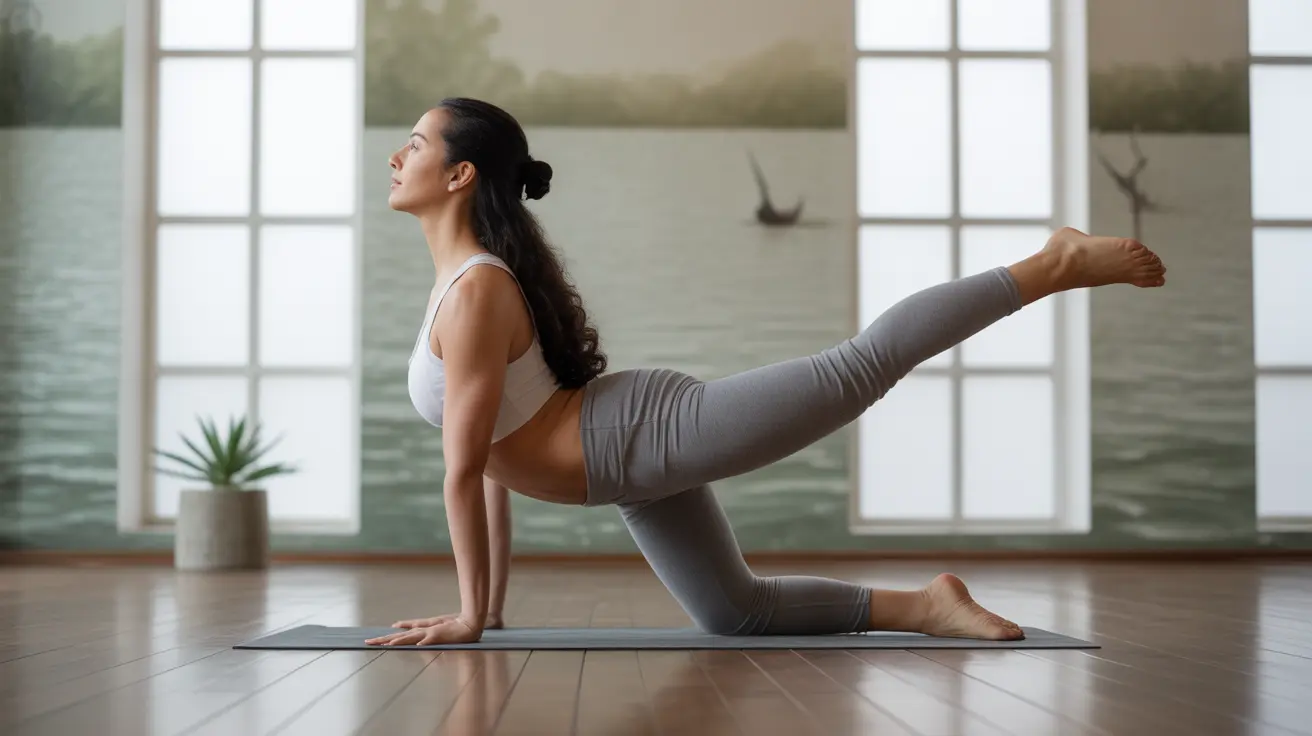Pigeon Pose (Eka Pada Rajakapotasana) stands as one of yoga's most powerful hip-opening postures, offering transformative benefits for both physical flexibility and emotional well-being. This deeply therapeutic pose targets hip flexors, piriformis muscles, and lower back tension, making it an essential addition to any yoga practice.
Whether you're a dedicated yogi or someone seeking relief from tight hips and lower back discomfort, understanding how to properly approach and modify Pigeon Pose can help you unlock its full potential while maintaining safety and comfort.
Understanding the Anatomy of Pigeon Pose
Pigeon Pose primarily works on the hip flexors, particularly the psoas muscle, while also engaging the piriformis, gluteus muscles, and lower back. This comprehensive engagement makes it particularly effective for addressing modern-day postural issues caused by prolonged sitting and sedentary lifestyles.
Key Muscle Groups Targeted
- Hip flexors and extensors
- Piriformis muscle
- Gluteus maximus and medius
- Lower back muscles
- Inner thigh muscles (adductors)
Proper Alignment and Safe Practice
Safety in Pigeon Pose begins with proper alignment and mindful progression. Start by warming up the hips and lower back with gentle exercises before attempting the full pose.
Essential Setup Steps
- Begin in Table Top position, ensuring your wrists are under your shoulders and knees under your hips.
- Slide your right knee forward toward your right wrist, angling it slightly toward the right.
- Extend your left leg straight behind you, keeping the top of the foot flat on the mat.
- Square your hips toward the front of the mat, using props if needed to maintain alignment.
- Gradually lower your upper body forward, supporting yourself with your hands or forearms.
Modifications and Props for Success
Making Pigeon Pose accessible for all bodies involves smart use of props and modifications. These adaptations help maintain proper alignment while preventing strain on sensitive joints.
Recommended Props
- Yoga blocks under the hip of the bent leg
- Bolster or blankets for forward fold support
- Folded blanket under the back knee
- Meditation cushion for hip elevation
The Emotional Benefits of Hip Opening
Beyond physical benefits, Pigeon Pose is known for its emotional release properties. The hips are often referred to as "emotional storage units" in yoga philosophy, making this pose particularly powerful for stress relief and emotional processing.
Mental Health Benefits
- Reduced anxiety and stress
- Enhanced emotional awareness
- Improved mind-body connection
- Deep relaxation response activation
Frequently Asked Questions
What are the main benefits of practicing Pigeon Pose for hip and lower back flexibility? Pigeon Pose significantly increases hip mobility, releases tension in the lower back, and improves overall flexibility in the hip flexors and rotators. Regular practice can help counteract the effects of prolonged sitting and reduce chronic lower back pain.
How do I safely perform Pigeon Pose to avoid knee or lower back injury? Always warm up properly, use props for support, and maintain proper alignment by keeping your hips square and supporting your front knee. Never force the pose, and back off if you feel any sharp pain or discomfort in your knees or lower back.
Can Pigeon Pose help relieve sciatica or lower back pain caused by tight hips? Yes, when practiced correctly, Pigeon Pose can help alleviate sciatica symptoms and lower back pain by releasing tension in the piriformis muscle and hip flexors, which often contribute to these conditions.
What are the best modifications or props to use in Pigeon Pose for beginners or people with limited flexibility? Beginners should use blocks under the hip of the bent leg, blankets for knee support, and a bolster for forward fold support. These props help maintain proper alignment while gradually building flexibility.
How does Pigeon Pose contribute to stress relief and emotional well-being during yoga practice? Pigeon Pose helps release physical and emotional tension stored in the hips, promoting relaxation and emotional release. The deep stretching combined with conscious breathing can trigger the parasympathetic nervous system, reducing stress and anxiety.




